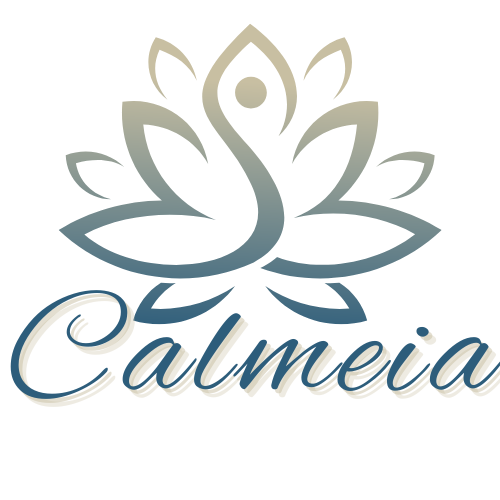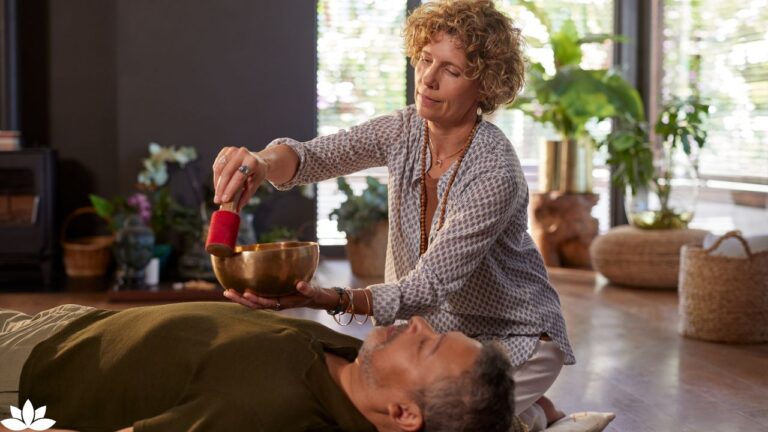Reiki is a form of energy healing that helps balance the flow of energy in your body to promote relaxation and natural healing. It works by channeling positive energy through a practitioner’s hands to reduce stress, ease anxiety, and support your body’s ability to heal itself. This gentle therapy can improve both physical and emotional health without replacing conventional medical treatment.

If you often feel overwhelmed by stress or anxiety, Reiki may offer a calming way to restore your mental clarity and emotional well-being. It also encourages spiritual healing by helping you connect with a deeper sense of peace and meaning in life. You can even practice Reiki on yourself to boost your energy and support self-healing whenever you need it.
What Is Reiki Energy Healing
Reiki is a healing method that uses energy to help balance your body and mind. It works by directing a universal life force energy through the practitioner’s hands to support your health. Understanding its history, energy concept, and how it stands apart from other therapies can help you see how Reiki might fit into your wellness routine.
Origins and Principles of Reiki

Reiki was developed by Mikao Usui in Japan in the early 1900s. He created a system called the Usui System of Reiki, based on his studies of ancient healing techniques and spiritual teachings. Usui combined these into a method that channels healing energy with gentle touch or by holding hands slightly above the body.
The main idea is to help your body’s natural healing process by improving energy flow. Reiki focuses on balance, relaxation, and harmony inside you. It is a holistic approach, meaning it works with your physical, emotional, and spiritual well-being.
The Concept of Ki and Universal Life Energy
Central to Reiki is the idea of Ki, also known as universal life energy. This energy flows through every living thing and keeps us alive and well. When your Ki is strong and balanced, you tend to feel healthy and calm. If the energy is blocked or weak, you might feel tired, stressed, or ill.
During a Reiki session, the practitioner acts as a channel that passes this healing energy to you. Their hands either touch or hover near you to help clear blockages and restore balanced energy flow. This helps your body relax and may support self-healing.
How Reiki Differs from Other Energy Therapies
Reiki is unique because it is gentle and non-invasive. Unlike some other energy healing methods that involve intense physical manipulation or complex rituals, Reiki is simple and easy to experience. The practitioner does not use tools or physical force.
Also, Reiki focuses on universal energy rather than specific body points or chakras alone. It is considered a complementary therapy, meaning it works alongside conventional medicine instead of replacing it. This makes Reiki a supportive option for managing stress, pain, or emotional issues while you follow your doctor’s advice.
How Reiki Therapy Works

Reiki works by guiding energy through your body to encourage healing and balance. It focuses on removing blockages and promoting smooth energy flow. A trained Reiki practitioner directs this energy during sessions, creating an environment for relaxation and self-healing.
Understanding Reiki Energy Flow
Reiki energy flows through your body’s biofield, a field of energy that surrounds and penetrates you. This energy is believed to support physical, emotional, and spiritual well-being. When energy flows freely, your body can function more effectively.
Energy flow can be affected by stress, illness, or trauma, causing blockages. Reiki therapy aims to restore this flow by channeling energy where it is needed. You may feel warmth, tingling, or calmness as energy moves through you.
Removing Energy Blocks
Energy blocks are areas where your body’s natural energy flow is interrupted. These blocks can cause discomfort, tension, or emotional distress. Reiki practitioners work to identify and clear these blockages to help your body heal itself.
During a session, the practitioner places hands lightly on or near parts of your body. This touch is meant to encourage energy to move past blockages. Removing blocks can lead to reduced stress and greater relaxation.
Role of the Reiki Practitioner
The Reiki practitioner acts as a guide for the flow of energy through your body. They do not heal you directly but help your body use its own healing abilities. Their main job is to safely pass energy and support your well-being.
Practitioners are trained to sense where energy is low or stuck. This allows them to focus their hands on those areas during the Reiki session. Skilled Reiki masters have advanced training to help deepen healing effects.
The Structure of a Reiki Session
A Reiki session usually begins with you sitting or lying down comfortably, fully clothed. The practitioner will place their hands gently on or above specific body areas to channel energy. Sessions often last between 30 to 60 minutes.
The environment is kept quiet and calm to promote relaxation. You might feel sensations like warmth or light pressure but no pain. After a session, many people report feeling more relaxed and balanced, with decreased tension or anxiety.
Reiki Benefits for Wellbeing

Reiki supports your overall wellbeing by helping you relax deeply, balance your emotions, and improve physical health. It works by guiding energy to flow smoothly through your body to encourage natural healing and calm your nervous system. This can help with stress, anxiety, and improve how well you sleep.
Stress Reduction and Relaxation
Reiki is known for reducing stress by calming your mind and body. When your energy flows freely during a session, it helps lower tension and promotes deep relaxation. This can slow your heart rate and ease muscle tightness.
By relaxing your nervous system, Reiki helps you handle daily pressures more easily. You might notice less worry and feel more peaceful after treatments. The down-to-earth feeling of calm you get from Reiki can build resilience against future stress.
Emotional Balance and Mental Health
Reiki supports emotional healing by helping to release negative feelings that may cause anxiety or depression. Regular sessions can improve your mood and create a sense of emotional stability.
The therapy encourages your natural ability to heal emotional wounds. It also helps clear blocked energy tied to past stress, which can promote a clearer mind and better mental focus. You may find it easier to cope with difficult emotions and maintain a balanced mindset.
Physical Healing and Immune Support
Reiki stimulates your body’s natural healing process by improving energy flow. When energy is balanced, your body can repair tissues more efficiently and recover faster from illness or injury.
It also supports your immune system by reducing stress hormones that can weaken your defenses. Reiki can help manage pain and discomfort, making it easier for your body to heal itself without relying solely on medication.
Enhancing Sleep Quality
Poor sleep is often linked to stress and an overactive nervous system. Reiki helps relax your body deeply, allowing you to fall asleep faster and enjoy more restful sleep.
The calming effects reduce racing thoughts and physical tension that disrupt sleep. By resetting your energy, Reiki creates conditions for better sleep cycles, which improves how refreshed you feel the next day. Better sleep contributes directly to your overall health and energy levels.
Reiki for Stress and Anxiety

Reiki helps you by promoting a calm state and easing physical symptoms linked to stress and anxiety. It works with your body’s energy flow to balance emotions and support your mental well-being. Using Reiki as a complementary therapy can fit alongside other treatments to help lower anxiety and stress levels.
Reiki for Anxiety Relief
When anxiety feels overwhelming, Reiki sessions offer a gentle way to restore balance. A Reiki practitioner channels energy through light touch or near the body to clear blockages that may hold tension or uneasy feelings. This process can help reduce your heart rate, ease muscle tightness, and bring a sense of calm.
You might notice fewer physical symptoms like headaches or stomach upset after Reiki. While Reiki doesn’t replace medical care, it often supports other treatments to improve how you manage anxiety. The peaceful feelings after a session can help you cope better with anxious thoughts.
Managing Daily Stress with Reiki
Daily stress can build up and affect your mood and body. Reiki encourages relaxation by realigning your energy, which helps your body handle stress better. Even short Reiki sessions can create a pause from daily pressures and improve your ability to face challenges calmly.
Using Reiki regularly may reduce tension in the muscles and lower stress-related symptoms. You can add Reiki to your routine to manage stress before it becomes overwhelming. This practice can support your overall balance by promoting natural healing and energy flow.
Supporting Mental Health with Reiki Meditation
Combining Reiki with meditation deepens the benefits for your mental health. While meditating, Reiki energy can help clear emotional blockages and enhance your mind’s focus. This mix promotes peace, reduces feelings of depression, and supports emotional well-being.
You can practice Reiki meditation by sitting quietly and focusing on energy moving through your body. This helps you stay present and calm. Over time, Reiki meditation may improve your resilience against anxiety and support ongoing stress reduction.
Reiki Spiritual Healing
Reiki spiritual healing involves balancing your energy to support your emotional, mental, and physical health. It encourages a deeper connection with yourself and the world around you. This process guides your body’s natural ability to heal while fostering calm and centeredness.
Holistic Approach to Mind, Body, and Spirit
Reiki works by channeling universal life energy through the hands of a Reiki master. This energy moves through your body to clear blockages and restore balance. When your energy flows freely, it helps ease tension, reduce stress, and support your body’s healing processes.
The practice targets your whole being—mind, body, and spirit—not just physical symptoms. You might feel more relaxed, emotionally balanced, and mentally clear after a session. Reiki’s holistic focus helps you maintain a healthier lifestyle and build resilience over time.
Ethical Ideals and Practices in Reiki
As you receive Reiki, know that practitioners follow strict ethical standards. They respect your privacy and personal boundaries during healing sessions. Transparency and consent are central to safe and effective Reiki care.
Reiki Masters are trained not only to deliver energy healing but also to approach your wellbeing with kindness and respect. They do not promise cures but focus on supporting your healing journey. You remain in control, using Reiki to complement conventional health treatments if you choose.
The Connection Between Spiritual Healing and Wellbeing
Spiritual healing through Reiki can deepen your sense of peace and purpose. It often helps you release negative emotions and past stress that affect your health. Regular sessions may improve your emotional stability and boost your overall wellbeing.
By fostering this spiritual balance, Reiki can help you cope better with life’s challenges. You might notice improved sleep, less anxiety, and a greater sense of calm. This connection between energy healing and wellbeing creates a solid foundation for lasting health improvements.
Reiki Self-Healing and Practice
You can use Reiki to heal yourself by channeling energy to areas of discomfort or imbalance. Learning the right techniques helps you apply energy healing safely and effectively. Practicing regularly deepens your connection to this natural healing method and supports ongoing well-being.
Learning Reiki for Self-Application
To start Reiki self-healing, you usually learn from a certified Reiki teacher. They guide you through attunements, which help you connect to universal life energy. These sessions empower you to channel Reiki energy on your own.
You will also learn simple hand positions for different parts of your body. These positions help you focus energy where it is needed most. Understanding the flow of Reiki energy is key. It moves naturally from your hands to areas requiring balance or healing.
You do not need to be an expert to feel benefits. With practice, your ability to direct healing energy becomes stronger. Learning about energy flow and how to quiet your mind improves your results.
Daily Self-Healing Techniques
Daily Reiki self-practice usually takes 15 to 30 minutes but can be shorter. Sit quietly and place your hands on or near your body where you feel tension or pain. Common spots are the head, heart, stomach, and limbs.
Breathe slowly and focus on feeling warmth or tingling in your hands. This sensation shows energy is moving. You can also repeat a calming word or phrase to help your mind relax.
You can perform full Reiki sessions on yourself or just focus on specific areas as needed. Keeping a consistent routine supports stress reduction, better sleep, and emotional balance. Recording your experiences helps track progress in healing.
Long-Term Benefits of Self-Healing
Regular Reiki self-treatment supports your body’s natural healing ability. Over time, many report reduced stress, less pain, and increased relaxation. You may also notice improved immune function and emotional clarity.
Practicing Reiki helps you become more tuned in to your body’s signals. This awareness can guide you to make healthier choices. It also strengthens your confidence in managing your own well-being.
Remember, Reiki self-healing complements medical care—it does not replace it. Using Reiki alongside your treatment plan can enhance your sense of balance and support recovery.
Reiki as a Complementary and Alternative Therapy
Reiki is used alongside standard medical care to support your healing and well-being. It can help manage symptoms and improve quality of life without replacing any treatments prescribed by your doctor.
Integrating Reiki with Conventional Care
You can use Reiki as a complementary therapy, which means it works together with your regular medical treatments. Reiki energy helps activate your body’s natural healing processes by promoting relaxation and reducing stress. This can support recovery and ease symptoms linked to illness or injury.
Reiki should not replace conventional care like medication or surgery. Instead, it adds another layer of support, especially for chronic conditions or after surgery. Many healthcare settings now offer Reiki as part of a wider treatment plan.
Reiki for Cancer Support
Reiki can help people undergoing cancer treatment by reducing anxiety, pain, and fatigue. It works by balancing your energy and creating calmness during difficult times. While Reiki does not treat cancer itself, it can improve your comfort and emotional strength during chemotherapy and radiation.
Many cancer centers include Reiki as part of their supportive care programs. This complementary approach helps manage side effects alongside your medical treatment, enhancing overall well-being.
Safety, Evidence, and Research
Reiki is considered a safe and gentle therapy, with very few risks when performed by a trained practitioner. It uses light touch or hand placement slightly above the body, so it is non-invasive.
Research shows Reiki can reduce stress and help with symptoms like pain and anxiety. However, studies are ongoing to better understand how Reiki energy works and to improve therapy methods. You should always use Reiki as a complement to medical care, not as a substitute.



